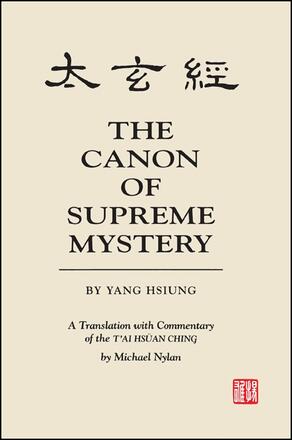Preface
Introduction
General Introduction to the Mystery Text
On the Term "Mystery"
A Capsule Biography of Yang Hsiung
The Mystery in the Tradition of the Changes
The Arrangement of the Mystery
Significant Structure in the Mystery
The First Seven Heads
No. 1. Center - 18, No. 2. Full Circle - 19, No. 3. Mired - 19, No. 4. Barrier - 19, No. 5. Small - 20, No. 6. Contrariety - 20, No. 7. Ascent - 21
Every Tenth Head
No. 1. Center - 22, No. 11. Divergence - 22, No. 21. Release - 22, No. 31. Packing - 23, No. 41. Response - 23, No. 51. Constancy - 24, No. 61. Embellishment - 24, No. 71. Stoppage - 25, No. 81. Nurturing - 25, General Commentary - 26
Method of Divination of the Mystery
Interpretation Following Divination
On Luck and Divination in the Mystery
The Mystery as Divination Classic
Early Notions of Ming: The Historical Background to the Problem of Fate
Yang Hsiung's Solution to the Problem of Ming
Propositions About Time, Luck, and Virtue
The Intellectual Debts of Yang's New Classic
Yang's Mystery as a Chinese Summa
Contra the Relativists
Contra the Immortality Seekers
Contra the Proponents of "Change as the Only Constant"
Contra Predestination
Contra the Mantic Specialists
Conclusion
Key Terms
The Five Classics of Confucianism
On Ch'i
Yin/yang Five Phases Theory: Correlative Thought
Self-Cultivation
"Center Heart"
Ritual
The Meaning of Chen
On the Style of the Book
Glossary for the Introductory Sections
Names of People
Concepts and Terms
Translation of the T'AI HSÜAN CHING
List of Tetragrams
No. 1. Center
No. 2. Full Circle
No. 3. Mired
No. 4. Barrier
No. 5. Keeping Small
No. 6. Contrariety
No. 7. Ascent
No. 8. Opposition
No. 9. Branching Out
No. 10. Defectiveness/Distortion
No. 11. Divergence
No. 12. Youthfulness
No. 13. Increase
No. 14. Penetration
No. 15. Reach
No. 16. Contact
No. 17. Holding Back
No. 18. Waiting
No. 19. Following
No. 20. Advance
No. 21. Release
No. 22. Resistance
No. 23. Ease
No. 24. Joy
No. 25. Contention
No. 26. Endeavor
No. 27. Duties
No. 28. Change
No. 29. Decisiveness
No. 30. Bold Resolution
No. 31. Packing
No. 32. Legion
No. 33. Closeness
No. 34. Kinship
No.35. Gathering
No.36. Strength
No.37. Purity
No.38. Fullness
No.39. Residence
No.40. Law/Model
No.41. Response
No.42. Going To Meet
No.43. Encounters
No.44. Stove
No.45. Greatness
No.46. Enlargement
No.47. Pattern
No.48. Ritual
No.49. Flight
No.50. Vastness/Wasting
No.51. Constancy
No.52. Measure
No.53. Eternity
No.54. Unity
o.55. Diminishment
No.56. Closed Mouth
No.57. Guardedness
No.58. Closing In
No.59. Massing
No.60. Accumulation
No.61. Embellishment
No.62. Doubt
No.63. Watch
No.64. Sinking
No.65. Inner
No.66. Departure
No.67. Darkening
No.68. Dimming
No.69. Exhaustion
No.70. Severance
No.71. Stoppage
No.72. Hardness
No.73. Completion
No.74. Closure
No.75. Failure
No.76. Aggravation
No. 77. Compliance
No. 78. On the Verge
No. 79. Difficulties
No. 80. Laboring
No. 81. Fostering
Leap Year Differentials
Autocommentaries
Polar Oppositions of the Mystery: Hsüan ch'ung
Interplay of Opposites in the Mystery: Hsüan ts'o
Evolution of the Mystery: Hsüan li
Illumination of the Mystery: Hsüan ying
Numbers of the Mystery: Hsüan shu
Elaboration of the Mystery: Hsüan wen
Representations of the Mystery: Hsüan yi
Diagram of the Mystery: Hsüan t'u
Revelation of the Mystery: Hsüan kao
Notes
Bibliography
Partial Index of Common Images
Index
